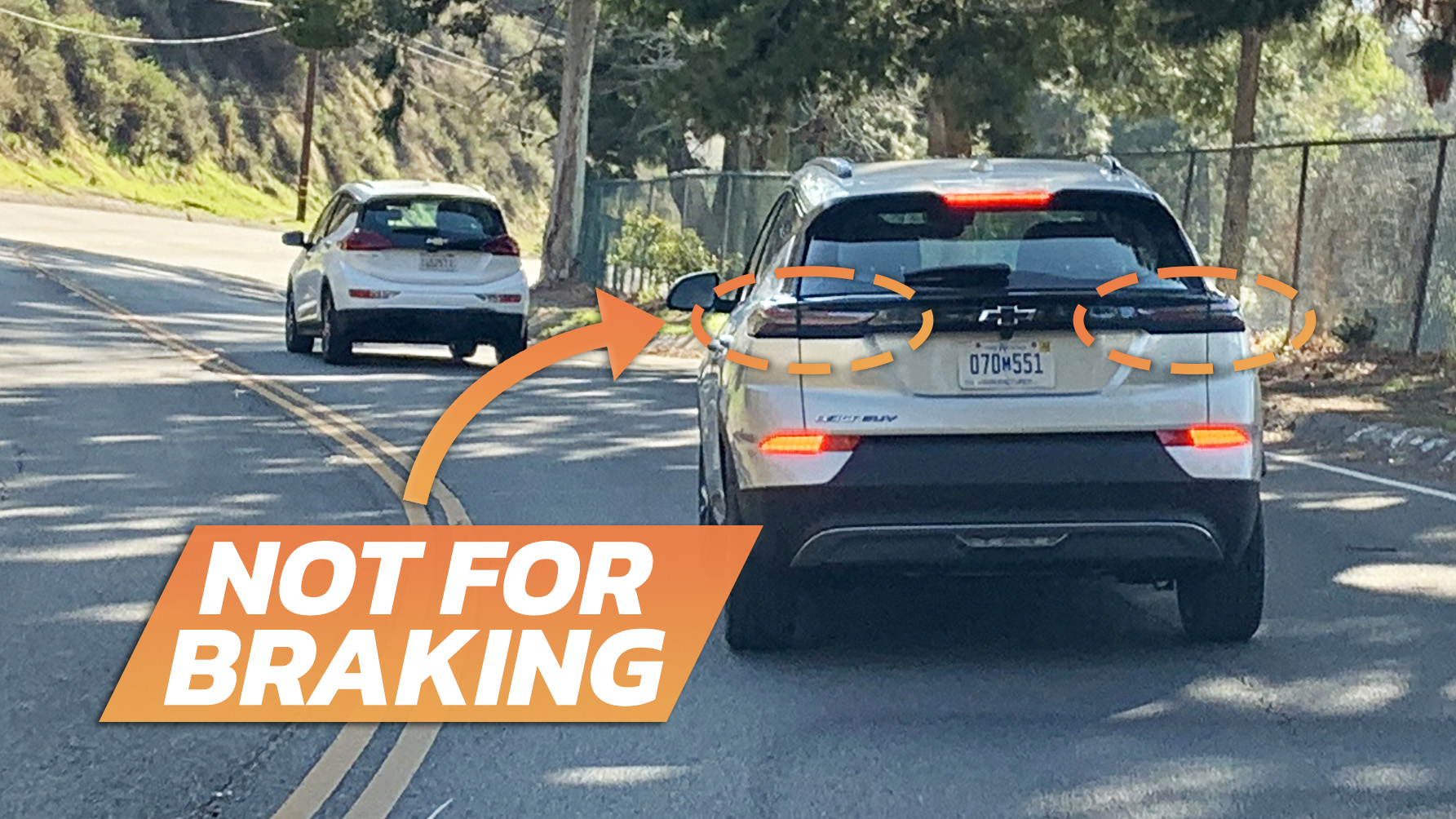

When following a newer Chevrolet Bolt or Bolt EUV in traffic, you might expect its brake lights to be the sleek-looking split LED lamps right below the rear window. Nope—those are merely the running lights and turn signals. The actual brake lights are mounted much further down by the rear bumper, which can confuse other drivers. But GM could be ditching that odd design choice for a more conventional setup in the next-generation Chevy Bolt.
According to a report from GM Authority, the upcoming Bolt will have brake lights positioned much higher on the rear, presumably packaged with the running lights and turn signals, right where you’d expect them to be. While it was never a massive safety issue, some 2022 and 2023 Bolt owners have expressed concern that drivers of high-riding SUVs or pickups, like the Silverado HD, might not be able to see the car’s low brake lights and instead rely solely on the top-mounted third brake light, which is arguably easier to miss. Customers who are interested in trading in their current Bolt for a future model may be pleased to learn that Chevy has supposedly come around on that design.

Why is the Bolt’s rear lighting situation so weird? Countless regulations dictate where brake lights can be, and naturally those often determine where car designers put them. One such rule is that all vehicles sold in the United States require at least one set of “fixed” brake lights—meaning they can’t be on any moving body part, such as a tailgate. As the Bolt’s upper taillights are mostly part of the tailgate, Chevy needed to add additional brake lights below it, that would remain visible no matter what position the gate was in. Trouble is, other drivers would naturally expect the upper lights to indicate braking, as is the case with nearly every other car on the road.
We say “nearly” because Chevy isn’t alone. Several other automakers use funky separate taillight/brake light combinations, with one of the most recent offenders being the 2024 Hyundai Santa Fe. Some have been quite clever about the placement, though. The BMW iX, for example, has a discrete pair of lights inside the tailgate door jambs; the old Buick Cascada‘s trunk was the same way. On those cars, the extra brake lights serve as backups when the normal ones can’t be seen. Only time will tell if Chevy opts for that approach or an even more conventional one when the new Bolt eventually debuts.
Got tips? Send ’em to tips@thedrive.com